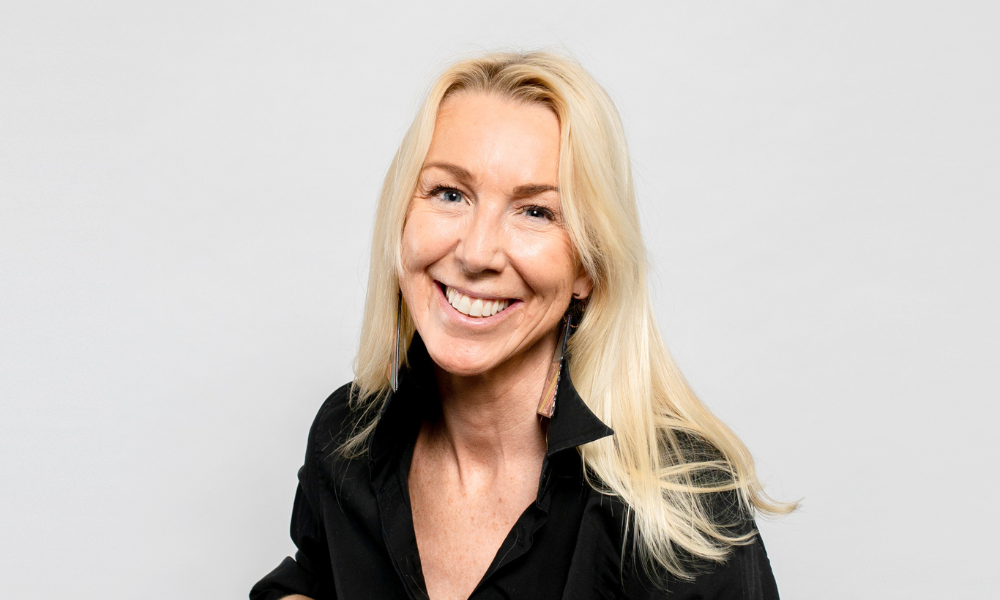
Legally blind, Caroline Casey says fear is the biggest barrier for employers when it comes to innovation in disability inclusion

One of the biggest issues for employers when it comes to disability inclusion is the fear of getting it wrong, particularly in this ‘cancel culture’ era, according to Caroline Casey.
“That fear is possibly the greatest barrier to innovation around this space because innovation by its nature is going to have a lot of failure in it,” said the creator and co-founder of The Valuable 500. “That's a big issue.”
Casey, who is legally blind, said there is also a lack of positioning of disability as a strategic opportunity for innovation and insight that benefits everyone.
“We’re all using assistive technology every day,” she said, referring to touch screens on smartphones, remote controls and even SMS texting, which was designed for people who are deaf.
“They all came from the disability experience – people forget that,” Casey said.
“For me, there's a disconnect between the innovation, the lived experience and the insight this community has to offer. And business has traditionally believed this is a government issue, it’s a UN convention issue, it's a medical issue. But now, because of representation changing it, because of this younger generation, that is so outdated.”
Casey was born with ocular albinism but was consciously brought up as a sighted child by her parents.
“I found out [about having ocular albinism] by accident when I was 17 years old,” she said. “And because the perceptions of disability back in 1989 were not something that you were going to aspire to at 17, I went into the disability closet where I remained very successfully for 11 years.”
It wasn’t until Casey was 28 – and working as a management consultant at Accenture – that she disclosed that she had ocular albinism.
“When I came out of the closet, it was one of those big aha moments in my life,” she said. “When I came out of the closet, I realised the scale of the disability exclusion crisis, that I was belonging to a family of 1.3 billion people or now is 20% of our global population. And I just simply could not turn my back on the issue. I realised by not owning my own identity, that I contributed to part of the discrimination that was out there.”
The Valuable 500 launched at the World Economic Forum’s Davos Summit in 2019. It’s a collective of 500 CEOs and their companies working together to end disability exclusion.
The organisation represents 22 million employees in more than 40 countries around the world, with some of the companies including Adobe, Coles Group, Westpac and AGL. It aims to drive system change among members.
“To join the Valuable 500, the CEO must give their signature, having done a review of the organisation and, at an executive board level, made a commitment to improve,” Casey said. “And that commitment is posted on the Valuable 500 website.”
In December next year, the company will also be hosting the SYNC52025 where leaders from the Valuable 500 companies will meet in Tokyo to report on three synchronised collective actions.
“The 500 companies have to work on three tracks of change or to remove three system barriers,” Casey said. “One is to get disabled talent into the leadership of the companies of tomorrow.
“The second is to get them to report on disability performance in their annual reports, on five harmonised metrics that they have worked with us on. The last is representation, and that is looking at how our companies radically change the way they look at representation of disability authentically, accurately, and excessively in their corporate affairs, their internal communications, in media, in advertising in everything they do, both in front of and behind the camera.”
Caroline identified a number of ways to implement a successful disability inclusion initiative within an organisation.
Set up conversations: The first step is for senior leadership has to speak up about it.
“The first thing is for the leadership to say, ‘Where are we?’” Casey said. “Because we have done research and in many organisations like the Googles and Microsofts of world it is believed that 15% of nearly every company of our Valuable 500 would have a lived experience of disability but they're not disclosing.
“Eighty percent of disability is invisible. There are parents of children with disabilities and employees who have parents who are aging or siblings. So let's open up the conversation. Let's create spaces for that conversation to happen. Let's hear about these experiences so we can come and understand that intelligence.”
Establish employee resource groups: “It needs executive sponsorship and it needs budgets,” Casey said.
Connect with other disability inclusion organisations: “Find groups like the Australian Disability Network, Business Disability Forum, Valuable 500, Disability In, Ability Now,” Casey said. “Join groups, organisations to see what you can learn. Individually, the most important thing for people to do is to ask the questions.”
Consider the digital accessibility of your organisation: “Look at the accessibility, the digital accessibility, of the organisation,” Casey said. “If your way of communicating with consumers is not accessible, you're just locking out money.”
Consider other areas of inclusion: “What have you done in other areas? What have you learned from the work that you're doing around race and LGBTQIA and gender? How can we see this intersectionality and work with each other? This is not another thing because disability does not discriminate,” said Casey, who will be speaking at the Impact Conference in Melbourne on May 9.
“So learn from what has been done in other areas, ask questions, be brave, put in goals, look at accessibility, get your leadership talking and get training for people so they're not terrified of getting around it.”